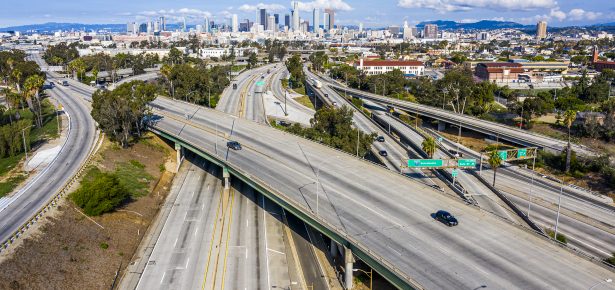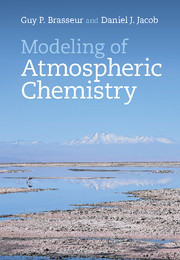
The dramatic slowdown of the world economy in the first months of 2020 following the development of the COVID-19 epidemic has led to a significant reduction in greenhouse gas and air pollutant emissions, specifically those associated with transportation and industrial activities. The first and most dramatic reduction in the concentrations of nitrogen oxides (NOx), carbon monoxide (CO), sulfur dioxide (SO2) and fine particulate matter (PM; specifically aerosol particles whose diameter is smaller than 2.5 microns or PM2.5), have been observed in China.
Analyses by Zhu Liu et al. (2020) of disturbances in the global carbon dioxide (CO2) budget during the pandemic have shown that, during the first quarter of 2020, emissions of this greenhouse gas decreased by 10% in China and by slightly more than 4% in Europe and in the United States. Globally, the largest relative decrease was associated with maritime transport (-13.3%), road transportation (-8.3 %), aviation (-8.0%) and industry (-7.1%). The global decrease in fossil fuel emissions during this period is estimated to be 5.8 % or 452 megatons of CO2. The authors of that study indicate that this drop in CO2 emissions has been unprecedented since World War II. They also highlight the uncertainties in their estimates: CO2 emissions from the energy sector, for example, are particularly sensitive to ambient air temperature, and the first months of 2020 have been exceptionally warm across most of the northern hemisphere. The effect of what is expected to be a short-term disturbance in fossil fuel CO2 emissions due to the pandemic should not have a large impact on the climate, since greenhouse warming is determined primarily by the long-term accumulation of anthropogenic carbon emissions rather than short-term variations.
With the spaceborne Ozone Monitoring Instrument (OMI) launched in 2004 on the American platform Aura and the Tropospheric Monitoring Instrument (TROPOMI) launched as part of the European “Sentinel-5 Precursor” project, it has become possible to monitor changes in several chemically reactive species in the atmosphere, and specifically nitrogen dioxide (NO2) for several years. These observations have allowed the scientific community to quantify the perturbations in the atmospheric abundance of this gas during the period of COVID-19 (Bauwens et al., 2020). These measurements show that on average the tropospheric NO2 column (concentration vertically integrated from the surface to the tropopause) in China was reduced by about 40% in February 2020. This number is consistent with the 55% decrease in surface NO2 concentrations (Shi and Brasseur, 2020) derived from an analysis of the data provided by the monitoring stations of the China National Environmental Monitoring Center. Figure 1 shows the TROPOMI NO2 column abundances in early 2019 and 2020 and Figure 2 shows the difference between the mean diurnal variation of PM2.5, NO2, O3, CO, and SO2 concentrations in northern China before and during the lockdown. As for carbon monoxide and PM2.5, the average reduction in ground level concentrations is approximately 35%. These values are obviously approximate and do not express geographical inhomogeneities, which may be significant, for example between urban and rural areas.


With the spread of the virus to other parts of the world, many countries had to adopt strict measures to protect their citizens; these have led to reductions in pollutant emissions on all continents. In fact, an unprecedented experiment has been carried out on a planetary scale. During the pandemic, and despite the humanitarian tragedy that has occurred, we have lived for a few weeks on a planet with improved air quality. Indeed, we must remember that, according to the WHO, nearly 4 million people die prematurely every year from diseases related to air pollution. Perhaps this episode of clean air will give us an opportunity to better understand the processes involved in the formation and fate of pollutants. For example, it is interesting to note that, while the amount of most primary pollutants (those directly emitted) decreased during the pandemic, the amount of secondary pollutants often increased. This is the case for ozone and even, in some areas, for airborne particles formed from sulfur and nitrogen oxides. The lockdown period appears to have increased the oxidizing capacity of the atmosphere and the formation of secondary aerosols, for example in eastern China (Huang et al., 2020). The lack of systematic observations of the key volatile organic compounds (VOCs), other precursors of ozone and PM2.5, makes the analysis difficult.
These early studies will have to be supplemented by additional measurements, particularly in other regions of the world, and by numerical simulations. The latter will shed light on the role of the different processes that contribute to the observed air quality disturbances. Models will need to account for pandemic-related changes in emissions from different sectors of the economy, differences between urban and rural conditions, the impact of weather conditions, and changes between different years due to other factors such as reduction in emissions due to New Year’s Eve periods that occur at different times in different countries.
What this pandemic episode shows is that the mitigation actions to be taken to reduce haze and ozone pollution in highly polluted areas are challenging. The reduction in the emissions of primary pollutants such as NOx and SO2, although important, will not be sufficient to solve the air pollution problem in countries such as China and India. Measures to mitigate ozone and PM2.5 will have to be adapted to the specific VOCs to NOx concentration ratios encountered in each region or urban area.

References
Bauwens, M., S. Compernolle, T. Stavrakou, et al. (2020), Impact of coronavirus on NO2 pollution assessed using TROPOMI and OMI observations, Geophys. Res. Lett., https://doi.org/10.1029/2020GL087978
Shi Xiaoqin and Guy P. Brasseur (2020) The Response in Air Quality to the Reduction of Chinese Economic Activities during the COVID-19 Outbreak, Geophys. Res. Lett., https://doi.org/10.1029/2020GL088070
Huang, X., A. Ding, J. Gao et al. (2020) Enhanced secondary pollution offset reduction of primary emissions during COVID-19 lockdown in China, https: doi.org/10.31223/osf.io/hvuzy
Liu Zhu, Z. Deng, P. Ciais, et al. (2020) COVID-19 causes record decline in global CO2 emissions, https://arxiv.org/abs/2004.13614?context=physics.geo-ph
Latest Comments
Have your say!